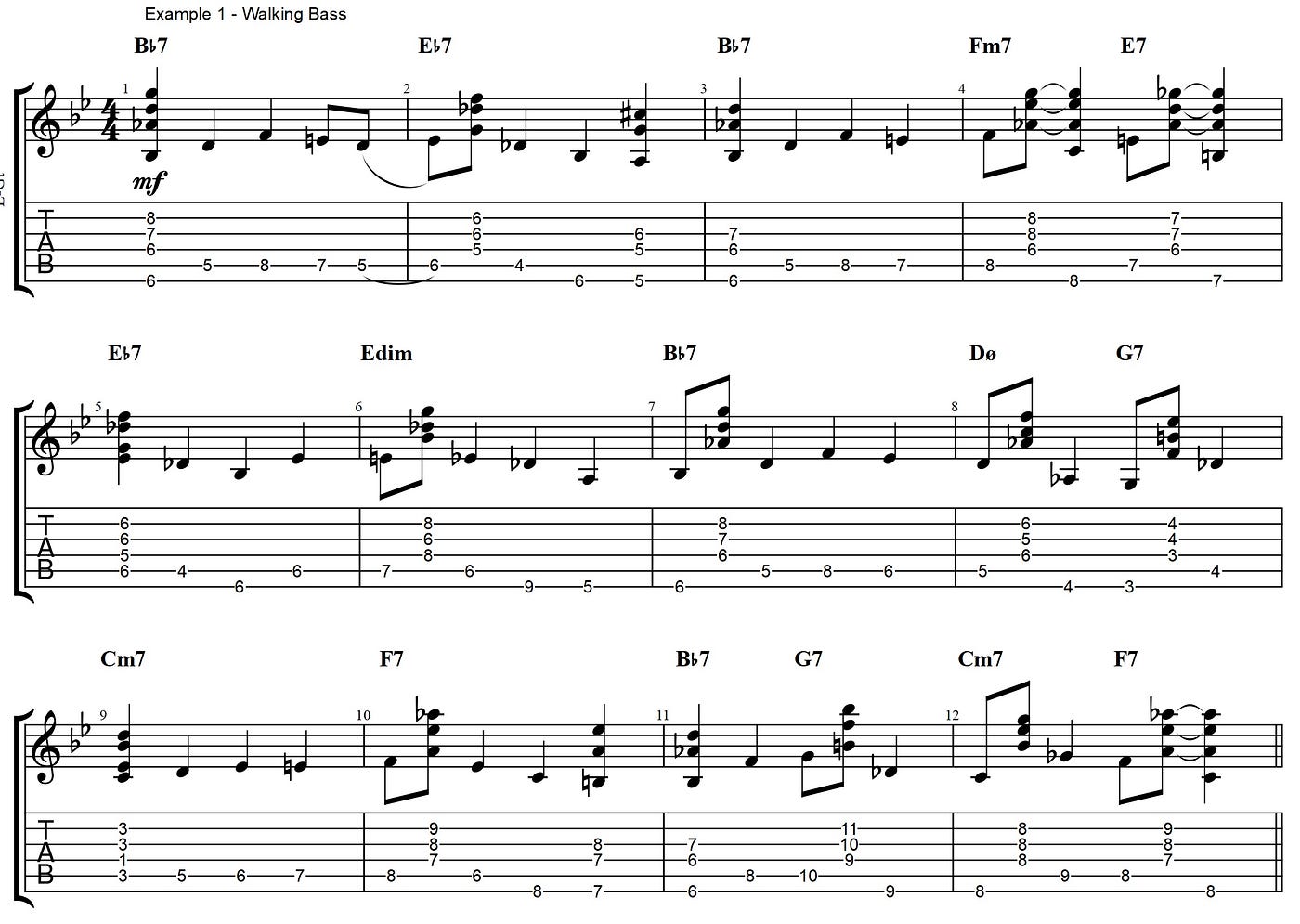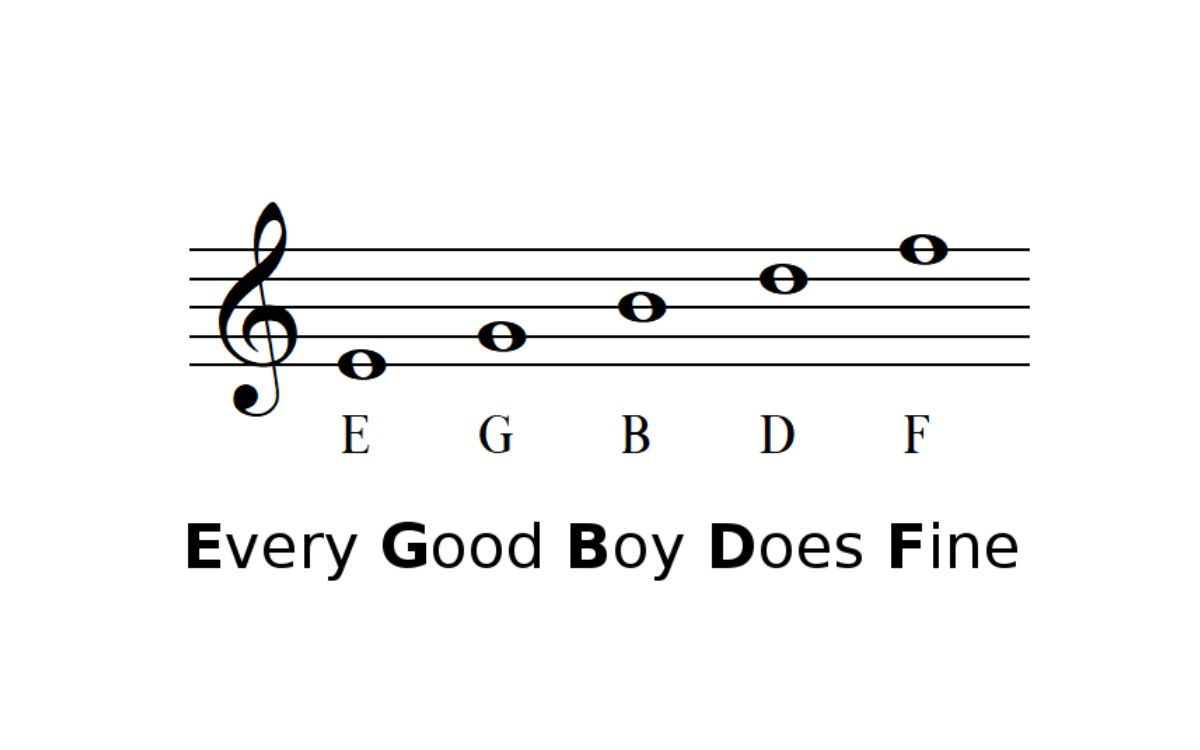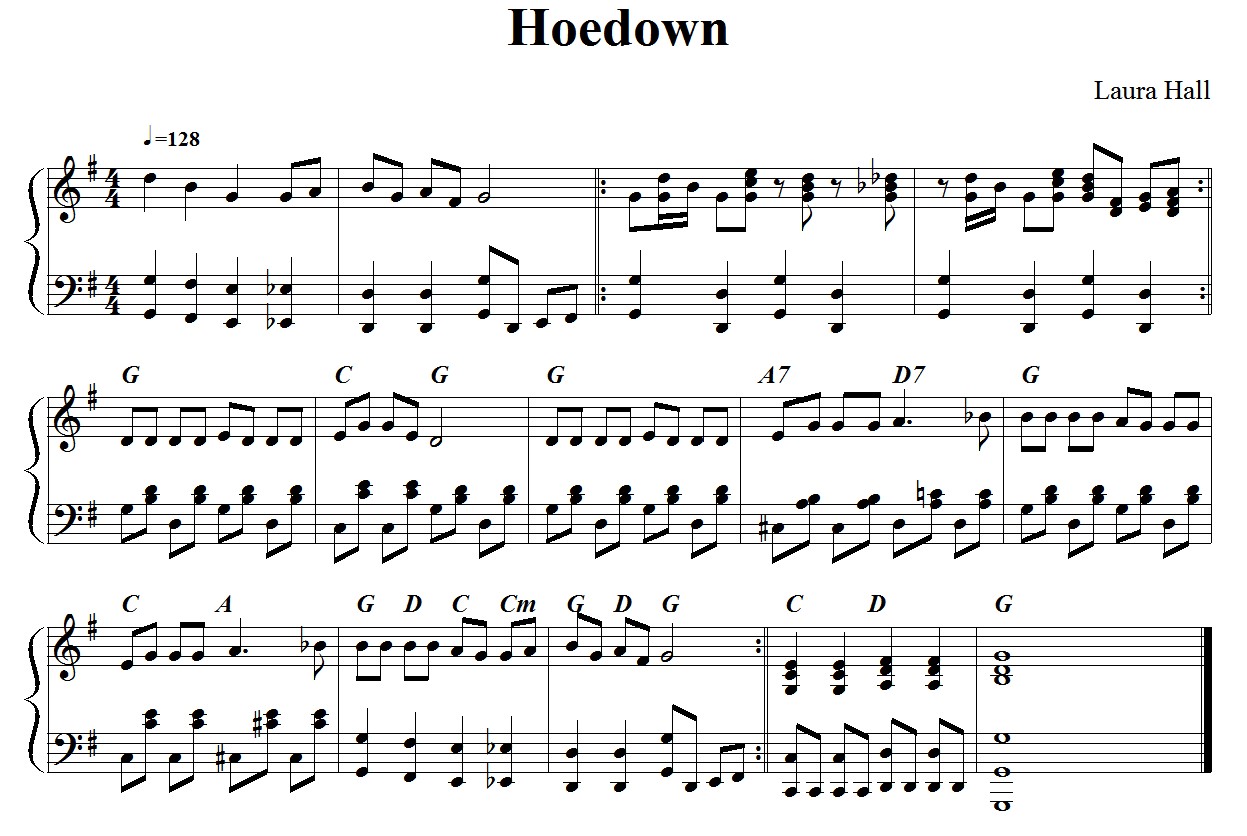Home>Instruments>Bass>What Is A Walking Bass Line


Bass
What Is A Walking Bass Line
Published: November 27, 2023
Discover the art of creating a captivating walking bass line, and learn how to enhance your bass playing skills with our comprehensive guide.
(Many of the links in this article redirect to a specific reviewed product. Your purchase of these products through affiliate links helps to generate commission for AudioLover.com, at no extra cost. Learn more)
Table of Contents
Introduction
A walking bass line is a fundamental aspect of many music genres, particularly in jazz, blues, and funk. It is a melodic line played by the bass instrument, typically the double bass or electric bass guitar, that creates a steady and rhythmic foundation for the rest of the music to build upon. The term “walking” refers to the smooth and continuous motion created by the bass notes, resembling the steady footsteps of someone walking.
A walking bass line adds depth, groove, and structure to a song, providing a solid rhythmic and harmonic foundation. It serves as a bridge between the chords played by the other instruments and creates a melodic counterpoint to the vocal or instrumental melodies. The walking bass line not only supports the overall harmony of the music but also provides a sense of movement and momentum.
Although commonly associated with jazz music, walking bass lines can be found in a wide range of genres. They are a crucial component in blues, where they add a soulful and expressive element, as well as in funk, where they establish a tight and infectious groove. Walking bass lines can also be found in rock, pop, and even country music.
In this article, we will explore the characteristics of a walking bass line, the various techniques used to create one, its importance in different styles of music, famous examples, and tips for creating your own walking bass line.
Definition of a Walking Bass Line
A walking bass line is a style of playing in which the bass player performs a continuous series of quarter notes, typically moving stepwise from one note to the next. This creates a smooth and flowing movement that adds depth and rhythm to the music. The term “walking” reflects the steady and deliberate nature of the bass line, mimicking the motion of walking or striding.
The main characteristic of a walking bass line is its role in outlining the harmony of a song. The bass notes played in the line correspond to the root notes of the chords being played by the other instruments. By following the chord progression, the walking bass line provides a solid foundation and establishes the overall tonal structure of the music.
In addition to outlining the harmony, a walking bass line also adds melodic interest to the music. It often includes passing tones, chromatic notes, and occasional rhythmic variations to create a captivating and expressive bass melody. The combination of steady quarter notes and melodic embellishments creates a seamless blend of rhythm and melody, enhancing the overall musical texture.
Furthermore, a walking bass line serves as a rhythmic anchor for the rest of the band. It establishes a strong sense of groove and pulse, providing a solid rhythmic foundation that allows other instruments to improvise and interact harmonically.
Overall, a walking bass line is characterized by its rhythmic and melodic qualities, its role in supporting the harmony, and its ability to drive the overall groove of the music. Whether it’s in a jazz, blues, funk, or any other genre, the walking bass line plays a critical role in shaping the sound and feel of the music.
Characteristics of a Walking Bass Line
A walking bass line possesses several distinct characteristics that contribute to its unique sound and role in a piece of music:
- Rhythmic Stability: One of the defining features of a walking bass line is its steady and consistent rhythm. Each note is typically played as a quarter note, creating a sense of stability and providing a solid foundation for the rest of the music. This rhythmic stability helps establish the groove and allows other musicians to feel the pulse of the song.
- Stepwise Motion: A walking bass line moves predominantly in a stepwise or scalar fashion, meaning it moves from one note to the next in a logical and sequential manner. This creates a smooth and flowing quality to the bass line and helps in outlining the underlying harmony of the music. However, occasional leaps or jumps to different notes may be used to add variation and interest.
- Harmonic Support: The primary function of a walking bass line is to support and enhance the harmony of a song. It achieves this by playing the root notes or chord tones of the underlying harmony. By accentuating the chord changes with each new note, the bass line reinforces the overall harmonic structure and guides the other musicians in playing the appropriate chords.
- Melodic Variation: While a walking bass line primarily supports the harmony, it also incorporates melodic variations to add interest and musicality. This can include the use of passing tones, chromatic notes, and occasional rhythmic embellishments. These melodic variations not only make the bass line more engaging but also allow the bass player to express their musical personality.
- Interaction with Other Instruments: The walking bass line interacts closely with the other instruments in the band. It acts as a bridge between the rhythm section and the melody instruments, providing a harmonic and rhythmic connection. The bass player must listen and respond to the musical cues of the other musicians, creating a cohesive and unified sound.
- Dynamic Control: A skilled bass player knows how to control the dynamics of a walking bass line to support the overall arc of the music. They can emphasize certain beats or notes to add tension or release, and adjust their volume and tone to blend with the rest of the ensemble. This dynamic control adds depth and nuance to the bass line, enhancing its overall impact.
These characteristics work together to create the distinctive sound and feel of a walking bass line. Whether it’s the rhythmic stability, stepwise motion, harmonic support, melodic variation, interaction with other instruments, or dynamic control, each element contributes to the overall musicality and groove of the music.
Techniques Used in Creating a Walking Bass Line
Creating a walking bass line requires a combination of technical skill, musical knowledge, and a deep understanding of the underlying harmony. Here are some common techniques used by bass players to craft an engaging and effective walking bass line:
- Root Movement: The bass player focuses on playing the root notes of the chords being played by the other instruments. This technique provides a strong foundation and outlines the harmonic progression of the song. By emphasizing the root movement, the bass line supports the overall chord structure and guides the listener through the changes.
- Arpeggios: Another essential technique is using arpeggios to highlight the chord tones within the bass line. This involves playing the individual notes of a chord sequentially, creating a melodic movement that emphasizes the specific character of each chord. Arpeggios add color and clarity to the bass line, making it more harmonically rich and interesting.
- Chromatic Approach Notes: Incorporating chromatic approach notes is a common technique used to create tension and resolution within a walking bass line. By adding half-step approach notes to the target notes, the bass line smoothly leads into the next chord change. Chromaticism adds a touch of sophistication and creates a sense of forward motion in the bass line.
- Syncopation: Syncopation is the deliberate shifting of rhythmic emphasis away from the traditional strong beats. By playing off-beat notes or adding rests, the bass player adds groove and a sense of anticipation to the walking bass line. Syncopation can be used sparingly to add rhythmic interest and variation to the overall feel of the music.
- Walking Patterns: There are various walking patterns that bass players utilize to create a consistent and flowing motion in the bass line. These patterns involve a combination of stepwise motion, leaps, and repeated notes. Some common walking patterns include the “box pattern,” “ascending and descending scales,” and “triad-based patterns.” These patterns help give structure and direction to the bass line.
- Improvisation and Adaptation: A skilled bass player is adept at improvising and adapting the walking bass line to suit the musical context. They have a repertoire of ideas, licks, and variations that can be used to add spontaneity and creativity to the line. By listening to the other musicians and responding in real-time, the bass player can navigate the harmonic and rhythmic complexities of the music.
These techniques, combined with a solid sense of rhythm and a deep understanding of the song’s harmony, allow bass players to create engaging and effective walking bass lines. It takes practice and experience to master these techniques, but with time, a bass player can develop their own distinct style and contribute to the overall musicality of a band.
Importance in Different Styles of Music
The walking bass line is a vital component in various styles of music, contributing to the overall sound, groove, and feel of the music. Let’s explore its importance in a few different genres:
- Jazz: In jazz music, the walking bass line is considered a cornerstone of the rhythm section. It provides a solid foundation for improvisation and helps guide the harmonic progression of the song. The walking bass line in jazz often incorporates syncopation, chromaticism, and intricate rhythmic patterns, adding complexity and sophistication to the music.
- Blues: In blues music, the walking bass line helps establish a soulful and rhythmic groove. It works in tandem with the drums to create a strong foundation for the guitar and vocals. The walking bass line in blues often incorporates blues scale runs, pentatonic patterns, and slides, adding depth and expression to the music.
- Funk: Funk music relies heavily on a tight and infectious groove, and the walking bass line plays a crucial role in achieving this. It establishes a solid rhythm for the rest of the band to build upon, while also adding melodic interest and movement. The walking bass line in funk often incorporates rhythmic variations, slap and pop techniques, and syncopated accents, creating a funky and danceable sound.
- Rock and Pop: While not as prominent as in jazz, blues, or funk, the walking bass line still plays a significant role in rock and pop music. It adds depth to the overall sound, provides a driving rhythm, and helps maintain a steady groove. The walking bass line in rock and pop can range from simple root note patterns to more complex melodic lines, depending on the style and arrangement of the music.
- Latin and Afro-Cuban: In Latin and Afro-Cuban music, the walking bass line is an integral part of the rhythm section, blending elements of jazz, blues, and Latin influences. It supports the clave pattern and provides a rhythmic foundation for the percussion instruments. The walking bass line in Latin and Afro-Cuban music often incorporates syncopation, melodic embellishments, and a mix of rhythmic styles like montuno and tumbao.
The walking bass line is adaptable and versatile, finding its place in numerous styles of music. Its importance lies in its ability to drive the rhythm, support the harmony, and add melodic interest to a song, regardless of the genre. Whether it’s in jazz, blues, funk, rock, pop, or Latin music, the walking bass line enriches the overall musical experience and creates a cohesive and dynamic sound.
Famous Examples of Walking Bass Lines
Throughout the history of music, there have been countless iconic walking bass lines that have left a lasting impact on listeners. Here are a few famous examples that showcase the versatility and creative possibilities of this style:
- “So What” by Miles Davis: The opening bass line of “So What” by Miles Davis, played by Paul Chambers, is a quintessential example of a walking bass line in jazz. The line moves in a steady four-beat pattern, outlining the root notes of the chords, and sets the mood for this timeless modal jazz composition.
- “Stand by Me” by Ben E. King: The walking bass line in “Stand by Me,” performed by bassist Joseph Macho Jr., is a memorable example in the realm of pop and soul music. The simple yet infectious bass line supports the heartfelt vocals and creates a solid foundation for this timeless classic.
- “Superstition” by Stevie Wonder: The iconic bass line in “Superstition,” played by the legendary Motown bassist Nathan Watts, is a masterclass in funk and R&B. The tight and intricate walking bass line, combined with a syncopated rhythm and inventive fills, contributes to the undeniable groove of this hit song.
- “The Chicken” by Jaco Pastorius: Jaco Pastorius, an influential electric bassist, showcases his virtuosic skills in “The Chicken.” The walking bass line in this jazz-fusion composition is intricate, filled with rapid scalar runs, double stops, and harmonics. Pastorius’s creativity and technical prowess shine through in every note.
- “Hysteria” by Muse: The bass line in “Hysteria,” performed by Chris Wolstenholme of Muse, is a standout example in the rock genre. It features a driving and intricate walking bass line, showcasing the fusion of rock and funk influences. The dynamic and energetic bass line adds depth and intensity to this iconic rock song.
These famous examples highlight the diverse range of walking bass lines found within different genres. They demonstrate how a well-crafted and skillfully executed walking bass line can elevate a song, enhance the overall musical experience, and leave a lasting impression on listeners.
Tips for Creating Your Own Walking Bass Line
Creating a walking bass line requires a combination of technical skill, musical knowledge, and creativity. Here are some tips to help you craft your own unique and engaging walking bass lines:
- Understand the Harmony: Familiarize yourself with the chord progression of the song. Know the root notes, chord tones, and any passing or tension notes that can be used to add melodic interest. This understanding will help you create a bass line that supports and enhances the overall harmony.
- Keep it Rhythmic: The walking bass line should have a consistent and steady rhythm. Utilize quarter notes as your foundation and experiment with syncopation and rhythmic variations to add interest. Maintain a strong sense of pulse to drive the groove of the music.
- Utilize Arpeggios and Scale Patterns: Incorporate arpeggios and scale patterns to create melodic movement within your bass line. This will help outline the chord changes and add depth to your playing. Experiment with different inversions and extensions to find unique and interesting sounds.
- Add Chromatic Approach Notes: Introduce chromatic approach notes to create tension and resolution within your bass line. By incorporating half-step movement towards the target notes, you can add color and create a smooth transition between chords. However, use this technique judiciously to maintain a cohesive and musical line.
- Listen and Respond: Pay close attention to the other musicians in the band. Listen for cues, dynamics, and rhythmic patterns that you can incorporate into your bass line. This interaction will help create a cohesive and unified sound within the ensemble.
- Experiment with Technique: Try out different techniques such as slapping, popping, slides, bends, and hammer-ons to add texture and expression to your bass line. Don’t be afraid to step outside your comfort zone and explore new sounds and techniques that suit the style and vibe of the music.
- Embrace Improvisation: Allow yourself the freedom to improvise and add personal touches to your walking bass line. Use your musical intuition and creativity to insert variations, fills, and unique phrasings that reflect your own style and musical personality.
Remember, creating a walking bass line is both a technical and artistic endeavor. Practice regularly, study the work of influential bass players, and continue to develop your musicality. With time and experience, you will develop your own distinct style and become proficient at crafting walking bass lines that elevate your music and captivate audiences.
Conclusion
The walking bass line is a fundamental element in various styles of music, known for its rhythmic stability, harmonic support, and melodic interest. From jazz to blues, funk to rock, this technique adds depth, groove, and structure to a song, serving as a rhythmic anchor and a melodic counterpoint to other instruments.
Throughout this article, we have explored the definition and characteristics of a walking bass line, the techniques used in creating one, its importance in different genres, famous examples from notable musicians, and tips for crafting your own walking bass lines.
Whether you’re a beginner learning the basics or an experienced bass player refining your skills, understanding the intricacies of a walking bass line is essential. It requires a solid understanding of harmony, rhythm, and improvisation to create a cohesive and engaging line that enhances the overall musical experience.
Remember to focus on rhythmic stability, stepwise motion, harmonic support, and melodic variation when crafting your walking bass lines. Experiment with different techniques, such as arpeggios, chromatic approach notes, and rhythmic variations, to add depth and interest to your playing. Be attentive to the other musicians in the band, adapting and responding to create a cohesive musical ensemble.
Developing your own unique style and voice as a bass player takes time and practice. By studying famous examples, listening to a wide range of music, and continuously honing your skills, you can master the art of creating captivating walking bass lines that leave a lasting impact on listeners.
So, whether you’re grooving in a jazz ensemble, laying down a funky rhythm in a band, or adding depth to a blues progression, embrace the power of the walking bass line and elevate your music to new heights.











